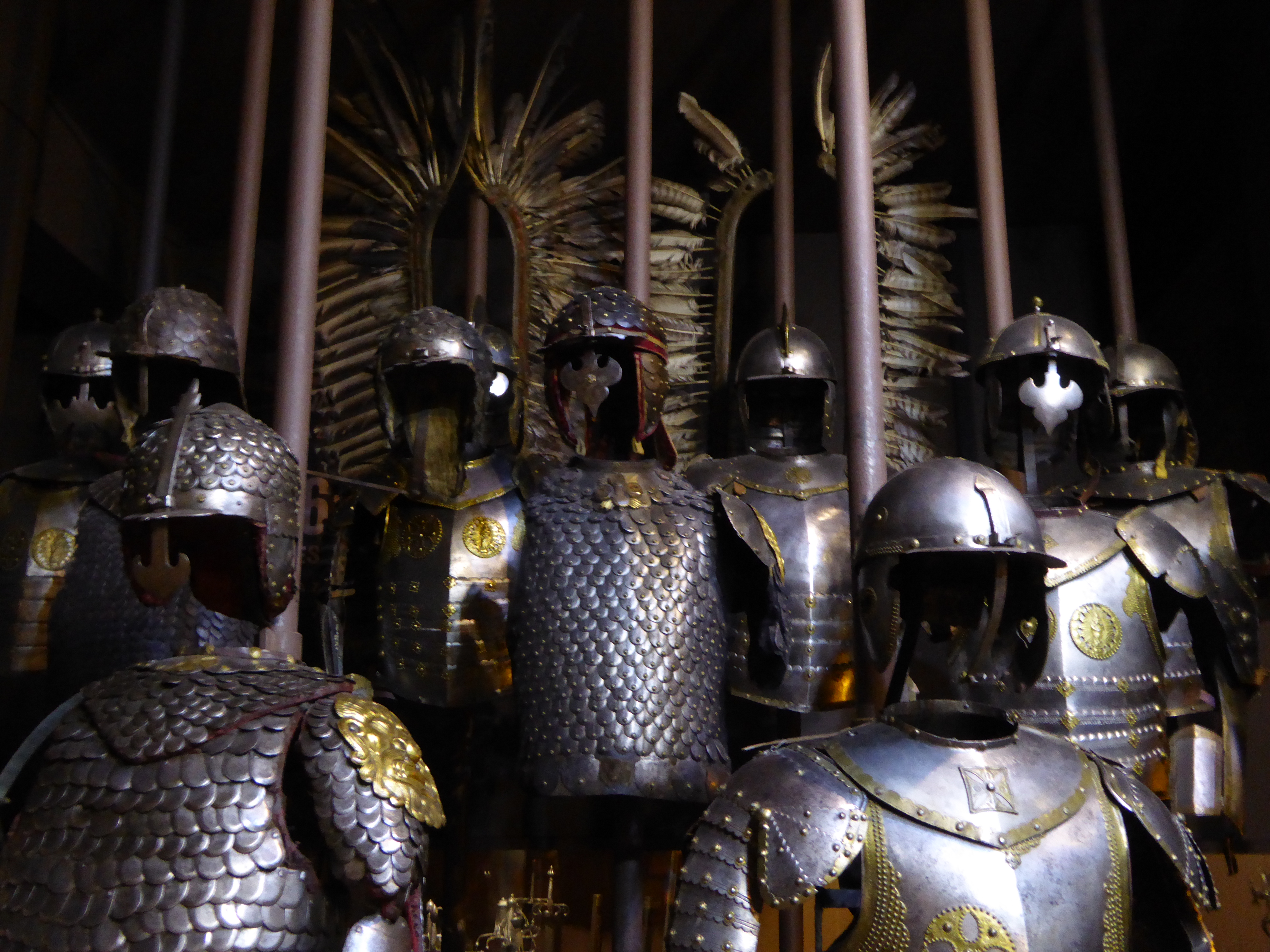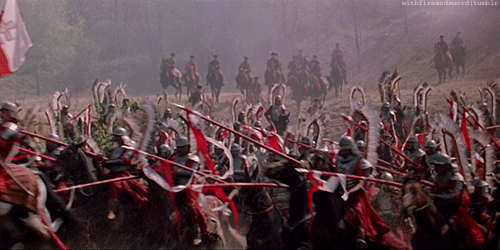The early Polish Hussars wore no armour and were armed only with the lance, sabre and shield. It gave them greater maneuverability and speed in battle - unlike that of the heavy, lumbering knights. By the mid-16th-century, the Polish King and Lithuanian Grand Duke, Stefan Batory reorganized the Polish and Lithuanian cavalry. He included armor, yet ensured that the Hussars would remain a fast, albeit heavy cavalry. They were made the standard of the Polish army, and were very-well trained and well-equipped.
Just 18 months after the reform 1400 winged hussars stood in the front of 12 000 rebelling soldiers of Gdansk (3100 landsknechts, 400 mercenary reiter cavalry, 400 city cavalry, and 6,000–8,000 militiamen). Hussars charge in the flank crushed rebelling forces. That night Danzig's losses amounted to 4400 dead and 5000 taken prisoner, while the Polish's army suffered 88 deaths.
Few years later, the battle of Kircholm was decided in 20 minutes by the devastating charge of polish cavalry. The Swedish defeat was utter and complete. The army of Charles IX had lost at least half, perhaps as much as two-thirds, of its original strength (8000-9000 dead). The Polish-Lithuanian losses numbered only about 100 dead.
In 1610 five thousand hussars fought with 30 000 russian accompanied with 5000 mercenaries from western Europe. Russians retreated after losing 5000 men ( Poles lost 100 hussars). That allowed polish king Władysław IV Waza became the new Tsar of Russia. Napoleon and Hitler tried that too, but without success. Do not forget the Battle of Khotyn, when the charge of 600 cavalry crushed advancing 10 000 Ottoman troops. When sultan Osman II saw that he bursted into tears.
The battle of Vienna ended expansion of Ottomans, it saved Europe. Some say that the ending of Tolkien's battle of Helms Deep was inspired by their charge.
A typical charge was staged at gradually accelerated intervals; for the first 75 meters, the hussar, mounted on his steed, would advance at a normal walk, the next 150 meters would be at a trot, then a canter, breaking into a gallop. The charge would be completed by a canter for the last 30 meters. This method was imperative in order to preserve the horse's stamina, especially in the event that the hussars had to engage in multiple charges, or final pursuit of the enemy. Incidentally, a trot is a two-beat gait with averages of about 8 mph (13 kph). A canter is a three-beat gait that averages 10-17 mph (16-27 kph). A gallop is like a canter but much faster at a four-beat gait averaging 25-30 mph (40-48 kph).
The most distinctive feature of the Polish Hussars were the pair of huge wings attached to their backs, each constructed of high wooden frames upon which eagle feathers were attached, although ostrich, swan and goose feathers had also been used. It is believed that the Polish Hussars wore these wings for the purposes intimidating the enemy, and they have often been depicted in battle wearing wings. This is the image that has long promoted by painters through the ages and more recently by film productions. The reality however may be that the Polish Hussars donned these wings only for the ceremonial purposes and victory parades.
The most deadly part of Hussars equipment was a 4.5m to 6.2m lance. Because of its length the lance had to be considerably light and easy to maneuver. They were constructed from fir-wood, though aspen was used in the fore part of the lance to make it lighter. The lance point was made of steel and reinforced with additional metal straps around the shaft. This also protected the wood just below from any saber cuts. It was often richly gilded.
The armour of the Polish Hussar consisted of breast and backplates, a pair of pauldrons and a pair of arm-guards, and was a splendid example of decorative design and superb craftsmanship. Many of the designs were inspired by earlier Roman armoury. But until 1570 the armour consisted only of mail coat, helmet, shield, lance and saber, although many had implemented breastplates. King Stefan Batory (1576-1586) had specific ideas about the type of armour worn by his men and insisted that they follow the Hungarian style. By 1600 the Hussars breastplates had been modified to take on the "half-lobster" design with several bands or lames from the lower chest to the bottom. he armour was much lighter, about 15kg, and permitted the hussar to ride quickly. The lighter, Turkish-style saddle allowed for more armour to be used by both the horses and the warriors. Moreover, the horses were bred to run very fast with a heavy load and to recover quickly. These were hybrids of old, Polish equine lineage and eastern horses, usually from Tatar tribes. As a result, a horse could walk hundreds of kilometres loaded with over 100 kilograms (warrior plus armour and weaponry) and instantly charge.
 |
| Polish King Sobieski battle armour from the battle of Vienna. |






0 comments:
Post a Comment